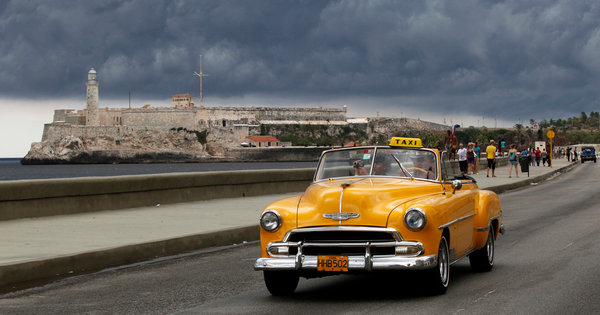One Country’s Trash is Another Country’s Treasure
May 4, 2012 by admin
One of the first noticeable aspects of Cuba are the classic American cars, which is somewhat ironic considering the anti-imperialist rhetoric of the Cuban revolution, but at the same time is clear evidence of the U.S. embargo on the country. This is another example of Cuban ingenuity and resourcefulness and says a lot about Cuban culture. Rather than dispose of heavily used vehicles in junkyards in order to purchase new vehicles as is the case in developed countries, Cubans have satisfied their transportation needs by taking these old vehicles and remodeling them to the point where they seem brand new. A couple questions rise in regard to the classic American cars in Cuba. How did those cars get there in the first place? Why haven’t these cars been replaced with modern stock cars produced in China? How does the classic American car influence the Cuban national identity? My guess would be that U.S. Americans brought the vehicles in large numbers prior to the Cuban Revolution of 1959 when Cuba was the playing ground of gambling, prostitution, and drug abuse. After the triumph of the revolution, the elite classes left, but the classic cars remained and were probably distributed among the population where they became private vehicles, government vehicles, or taxis. It is amazing how the cars have lasted so long, but during a state of economic embargo and a period of crisis, the only choice is to constantly fix the American cars. With the recent trade with China, there is evidence of modern compact stock vehicles that are likely more fuel efficient than the large classic cars, however the classic car is the preferred choice for it is custom-made, unique, and a symbol of Cuban identity.
As you walk down any artisan market designed to sell to tourists, you will notice how the American classic car has become an icon of Cuban identity. Wooden and clay sculptures, paintings, posters, postcards, shirts, and toys that all resemble the American classic cars. It is somewhat strange as a U.S. American to purchase an authentic Cuban artwork that resembles an American product, but I assign my experience in Cuba to the product. Now every time I look at the souvenir, I see a Cuban artwork rather than an American product. Cubans have taken an American product, reproduced it in artwork, and sell it to us American tourists as a Cuban product. Cubans have now claimed the classic American car as their own. Does embracing the classic American car as a symbol of Cuban identity compromise the goals of the Cuban revolution?
Leave a Reply
You must be logged in to post a comment.
